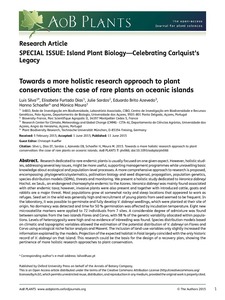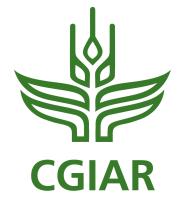Resource information
Research dedicated to rare endemic plants is usually focused on one given aspect. However, holistic studies, addressing several key issues, might be more useful, supporting management programs, while unravelling basic knowledge about ecological and population level processes. A more comprehensive approach to research is proposed, encompassing: phylogenetics/systematics, pollination biology and seed dispersal, propagation, population genetics, species distribution models (SDMs), threats and monitoring. We present a holistic study dedicated to Veronica dabneyi, an endangered chamaephyte endemic to the Azores. Veronica dabneyi was mainly found associated with other endemic taxa, however invasive plants were also present and together with introduced cattle, goats and rabbits are a major threat. Most populations grow at somewhat rocky and steep locations that appeared to work as refuges. Seed set in the wild was generally high and recruitment of young plants from seed seemed to be frequent. In the laboratory, it was possible to germinate and fully develop V. dabneyi seedlings, which were planted at their site of origin. No dormancy was detected and time for 50% of germination was affected by incubation temperature. Eight new microsatellite markers were applied to 72 individuals from 7 sites. A considerable degree of admixture was found between samples from the two islands Flores and Corvo, with 98% of the genetic variability allocated within populations. Levels of heterozygosity were high and no evidence of inbreeding was found. SDMs based on climatic and topographic variables allowed the estimation of the potential distribution of V. dabneyi on Flores and Corvo using ENFA and Maxent. The inclusion of land use variables only slightly increased the information explained by the models. Projection of the expected habitat in Faial largely coincided with the only historic record of V. dabneyi in that island. This research could be the basis for the design of a recovery plan, showing the pertinence of more holistic research approaches to plant conservation.



